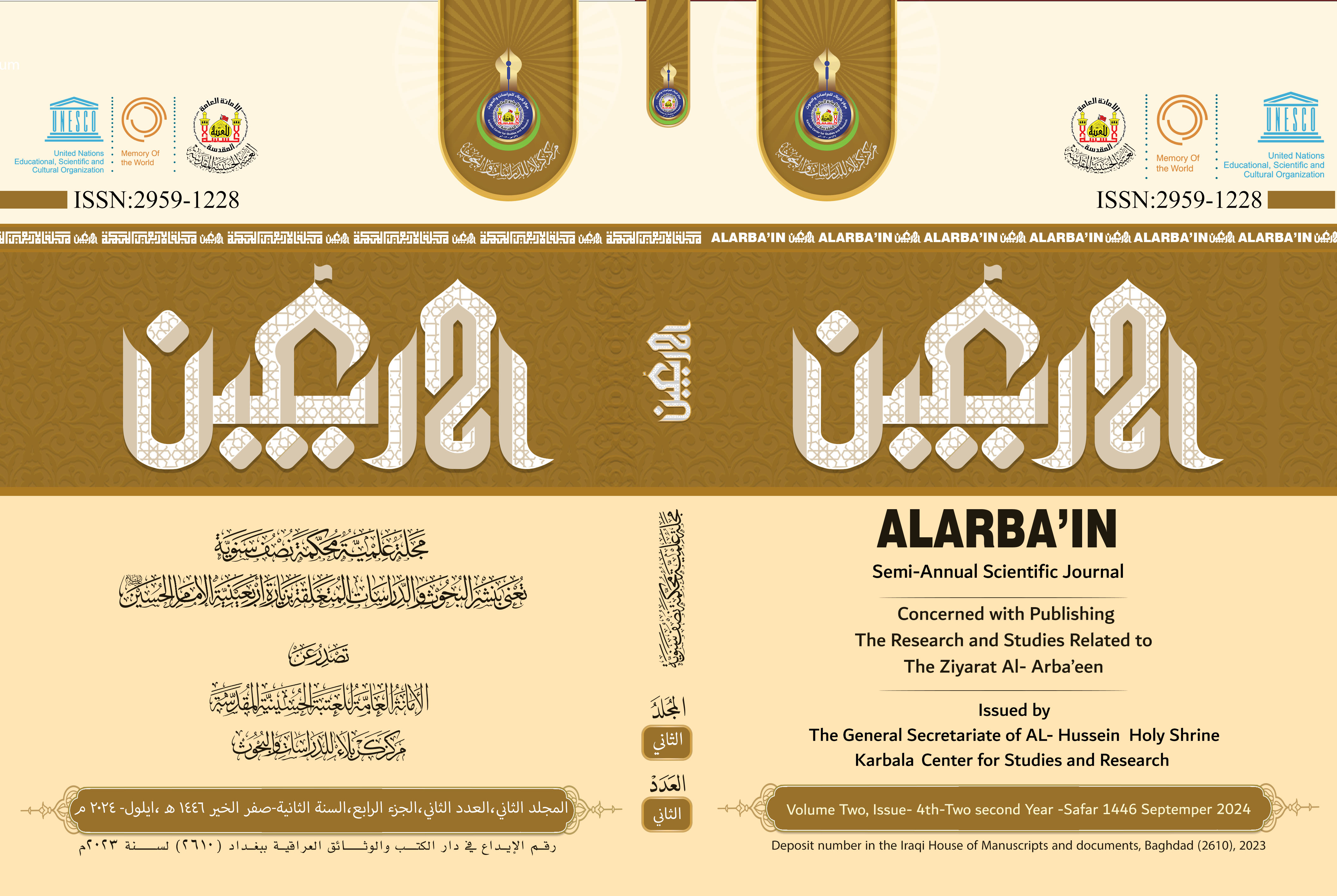Abstract
The plastic arts are considered among the creative elements
that address thought and feelings at different levels of reception
and diversity. Many of them embody the sensory, intellectual and
ideological concept, and the consolidation and documentation of
identity values. The implementation of artistic works that were
taken from the atmosphere of the Karbala incident and the Arbaeen
visit are among the artistic models in which documentation is
embodied. And diagnosing identity artistically, and plastic art
embodied the rooting of the identity of this artistic style through
various readings and visions of this incident, as the Battle of Al-
Taf was formed pictorially in many artistic works, which played a
major role in societal interaction.
Art is a reflective mirror of the events of prominent societies,
and it is the expression of their customs, cultural and spiritualachievements, traditions and heritage, including ideological
heritage, and art is one of the means of recording and documentation.
Many attempts by visual artists have embodied, in some aspects
of their artistic works, a documentation and diagnosis of the
incident of the Kerbala or the Arbaeen Pilgrimage, by expressing
this historical epic firmly rooted in the living human conscience,
through various tools, artistic methods and trends, where the
symbolism that is evident in the embodiment of the besieged
and defending characters is contrasted with Masses of fighting
figures, showing the pain and ugliness of violence as semantic
factors to express good and evil, and highlighting the ferocity and
brutality of war, the position of the oppressed and the oppressor in
it, victory and defeat, the extent of its impact on man and society,
and how to mobilize the human awareness that Hussein bin Ali
and those with him called for to support truth. And he spread the
spirit of victory, and more precisely, the moral victory that Imam
Hussein achieved through his journey, which was followed by the
path of his lovers.
The research includes four chapters. The first chapter deals
with the methodological framework and addresses the goal and
importance of the research, then the problem of the study. The
second chapter is the theoretical framework and consists of four
sections with indicators. The third chapter takes the approach of
the applied analytical framework, then the fourth chapter is where
the results are drawn, And recommandations and then appendices.

